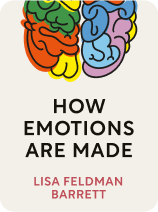

This article is an excerpt from the Shortform book guide to "How Emotions Are Made" by Lisa Feldman Barrett. Shortform has the world's best summaries and analyses of books you should be reading.
Like this article? Sign up for a free trial here.
How can you better understand other people’s feelings? What are the benefits of empathizing with others?
If you want to understand other people’s feelings, you need to first understand your own emotions, according to Lisa Feldman Barrett. Barrett is a neuroscientist and psychologist who has devoted herself to deconstructing old theories of emotions to create a new, more accurate theory.
Read on to learn the myths and truths Barrett has identified about understanding other people’s feelings.
Barrett: How to Understand Other People’s Feelings
When it comes to understanding other people’s emotions, Barrett emphasizes that our perceptions of others’ emotions are just guesses, which are accurate only when they match the other person’s experience. People are better able to communicate and understand other people’s feelings when they are in sync, meaning they share a cultural background or past experiences, and their nonverbal behaviors coordinate. Two people can also “co-construct” emotions depending on the words they choose. For example, if a parent asks a child, “Are you upset?” instead of “How are you feeling?” they influence the likelihood that the child will experience a negative emotion.
Myths: Facial Expressions & Physiological Changes Reveal Feelings
It’s a myth that specific emotions correspond with specific, singular facial expressions, according to Barrett. It’s long been thought that you can understand what other people are feeling solely by looking at their facial expressions—a smile means happiness, a frown means sadness, and so on. But Barrett points out that people move their faces in many different ways when experiencing the same type of emotion; they also move their faces in the same way when experiencing different emotions. For example, a person experiencing joy could smile, cry, or shout; a grimace could mean anger, disgust, surprise, or annoyance, to name just a few.
By the same token, says Barrett, emotions do not display “signature” physiological changes, such as an increased heart rate when someone is experiencing fear. When trying to understand other people’s feelings, it’s important to know that the same physiological state can mean different things: An increased heart rate can mean sadness, excitement, elation, or can even be a symptom of a heart attack.
(Shortform note: Barrett acknowledges that physiological changes are an important aspect of emotions, but she contends that individual emotions can’t be pegged to specific patterns of physical changes in your body. Some studies reach the opposite conclusion. One goes so far as to find that making facial expressions that represent various emotions—as opposed to actually experiencing the emotions—can itself elicit distinct patterns of physiological changes, such as changes in heart rate, skin temperature, and skin conductance.)
The Truth? Your “Emotional Vocabulary” Helps You Understand People’s Feelings
The traditional view of emotions is that the responsibility for understanding them lies with the perceiver because emotions are supposedly universally displayed. Under the theory of constructed emotion, if you want your emotions to be understood, you have a responsibility to describe them accurately and transmit clear cues, so other people aren’t just guessing.
To understand other people’s feelings, develop a rich set of emotion concepts. Being versed in a large number of specific emotion concepts and able to differentiate precisely between them is called emotional granularity. If you have high emotional granularity, it means that rather than just identifying that you feel “bad,” you’re able to construct and identify a variety of more specific emotion concepts such as angry, grumpy, aggravated, annoyed, gloomy, and sad, and apply those concepts to what you could be feeling in the moment. Studies show that people with high emotional granularity can predict and categorize sensations more efficiently, so they are better able to balance their body budgets and tailor their actions to fit their environment.
In some studies, people who could distinguish more finely between unpleasant emotions were 30% more flexible when regulating their emotions, less likely to drink excessively when stressed, and less likely to retaliate aggressively against someone who’d hurt them.
Barrett identifies a variety of ways to increase your emotional granularity to better understand other people’s feelings:
- Try new foods.
- Go on trips.
- Read books and watch movies.
- Have new experiences.
- Learn new words.
- Keep track of your positive experiences each day.
In addition, if you are a parent, you can help your child increase their emotional granularity by talking to them about emotions early on, using a wide variety of words.

———End of Preview———
Like what you just read? Read the rest of the world's best book summary and analysis of Lisa Feldman Barrett's "How Emotions Are Made" at Shortform.
Here's what you'll find in our full How Emotions Are Made summary:
- A deep dive into what emotions really are and where they come from
- How some cultures have different emotions than others
- The difference between feelings and emotions






